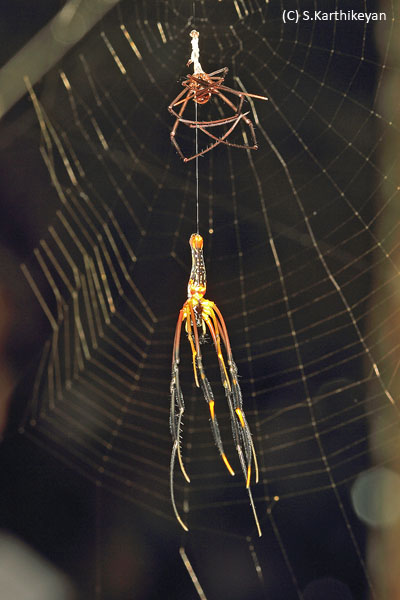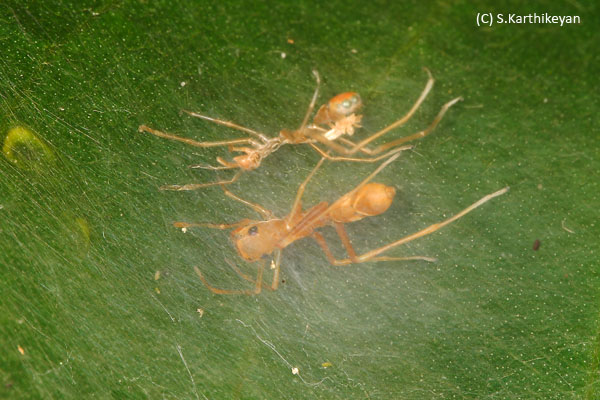It was during the latter half of the eighties that I witnessed an extraordinary event; an event that even to this day leaves me marvelling when I think about it!
Seeing a tarantula is an exciting experience in itself; but witnessing one moulting is even more so! I had the fortune of witnessing a tarantula which had just started to moult. The exoskeleton covering the carapace (cephalothorax; the first segment of a spider’s body) had just split from the exoskeleton covering the chelicerae (the organ that houses the fangs).
As I watched, the split widened and eventually the entire carapace separated from the rest of the exoskeleton barring a hinge attaching it to the abdomen. Next, the pedipalps (leg-like appendages next to the fangs) came out one after the other. One by one, the fangs and all the appendages came out! The last to come out was the abdomen as the spider crawled out leaving behind an almost intact skin (exoskeleton)! The tarantula with its new exoskeleton looked beautiful; the colour of the spider was darker and brighter and the fangs were white. The fangs turned to a deep brown as time passed. The ‘fresh’ spider sat still for a long time without any perceptible movement, allowing the new skin to dry.
The whole process took close to two hours as I sat, transfixed, watching it. The unfortunate part of the story is that I did not have a camera those days to document this fascinating natural history event.
All spiders, like other arthropods, have an exoskeleton that is restricting. It has to be shed periodically for the spider to be able to grow. The frequency and the number of times a spider moults, depends on the species, age and sex of the individual.
I had described one such incident earlier involving a grasshopper.
From the time, I rediscovered my interest in spiders in the recent times, I have seen tarantulas several times. I have also come across the shed exoskeleton but I have not been lucky enough to see another tarantula moulting. Nevertheless, I have chanced upon many other spiders doing so and the watching the process continues to fascinate me!
Events like this are happening all around us – in our little gardens or perhaps within our own homes. Look out and you may be rewarded. Here, I leave you with these two images of spiders moulting.

